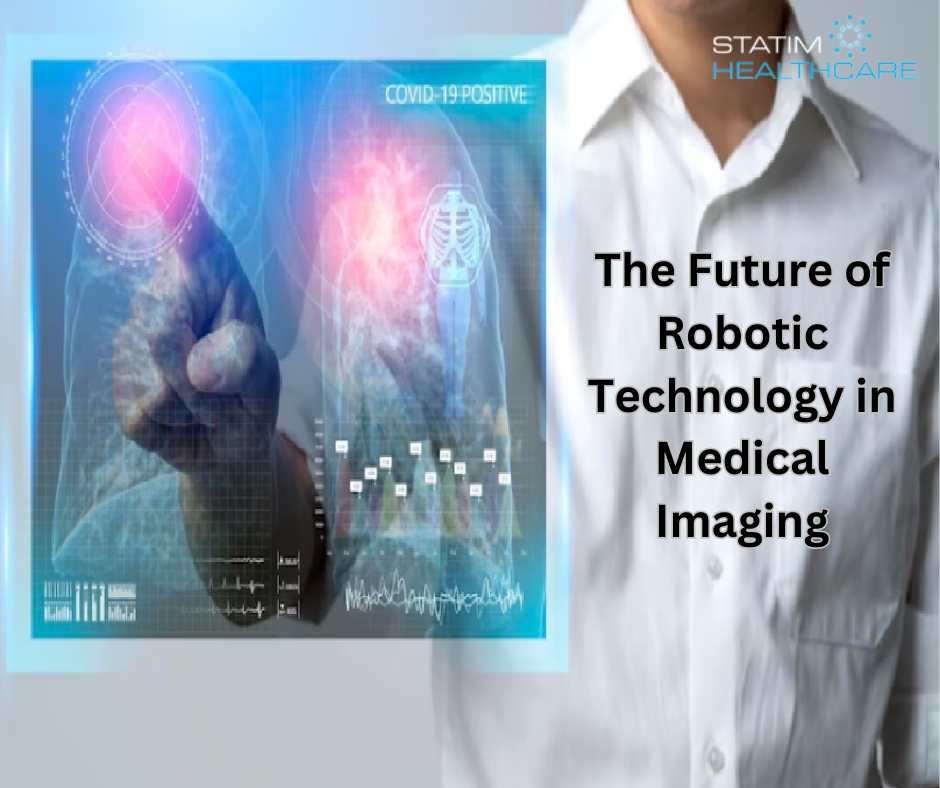Medical diagnostic imaging has played a crucial role in modern healthcare, allowing doctors to thoroughly examine the human body and effectively diagnose and treat various conditions. Throughout its history, medical diagnostic imaging has continually evolved, driven by advancements in technology. One exciting frontier within this field is the integration of robotic technology.
The Current State of Diagnostic Imaging
Before we explore the fascinating field of robotics, let’s first assess the current state of medical diagnostic imaging. Diagnostic imaging technologies such as X-rays, CT scans, MRIs, and ultrasound have played a crucial role in healthcare for many years. These systems provide physicians with clear visuals of internal body structures, enabling early detection, precise diagnosis, and effective treatment planning.
The United States, renowned for its state-of-the-art medical facilities and research institutions, has been leading the way in advancing diagnostic imaging systems. Not only have these technologies improved patient care, but they have also been instrumental in advancing medical research. They have helped scientists gain a deeper understanding of diseases and discover groundbreaking treatments.
The Robotic Revolution
The integration of robotic technology in the medical diagnostic imaging field has been transformative. This trend has seen a significant increase in recent years, with robots being utilized in various healthcare settings. The advantages and benefits that come along with this integration are numerous and wide-ranging.
Precision and Consistency
Robots are highly proficient in performing repetitive and precise tasks, which makes them particularly valuable in the field of diagnostic imaging system. Achieving precision is crucial in this context, as it directly impacts the quality of medical images. Robotic systems excel at consistently positioning imaging equipment with pinpoint accuracy. This capability significantly reduces the margin for error, making procedures like guided biopsies and radiation therapy planning more reliable and effective.
Improved Patient Experience
Medical imaging procedures can cause stress and anxiety for patients, as the unknown and the need to stay still during imaging can be overwhelming. However, robotic technology shows promising potential in improving the patient experience. By utilizing robots to perform imaging procedures, patients can undergo scans with minimal discomfort, reducing the necessity for repeated scans due to movement and providing a more comfortable and efficient experience overall.
Enhancing Diagnostic Accuracy
Integrating robotic technology into healthcare can greatly enhance diagnostic accuracy. By assisting radiologists and other healthcare professionals in capturing images from precise angles and perspectives, robots enable a level of detail that may not be achievable manually. This enhanced imaging capability is especially beneficial for identifying subtle abnormalities and improving the overall diagnostic process.
Automation and Efficiency
Using robotic systems in USA medical imaging system can greatly improve workflow efficiency. These systems can take on routine tasks like patient positioning and image capture, freeing up healthcare professionals to focus on interpreting data and providing quality care to patients. This automation not only enhances efficiency but also minimizes the possibility of human error.
Applications of Robotic Technology in Diagnostic Imaging
Robotic technology is revolutionizing diagnostic imaging across various fields. Here are some key areas showcasing the significant impact of robots in this domain:
Robot-Assisted Surgery
Robots are no longer just limited to surgical procedures. They are now being employed in diagnostic imaging-guided surgeries as well. These advanced systems help surgeons navigate and manipulate instruments with precision during minimally invasive procedures, leading to better outcomes for patients and quicker recovery times.
Image-Guided Interventions
Robotic systems are now being used in image-guided procedures like biopsies and ablations. They help healthcare professionals accurately target lesions or abnormalities, minimizing the risk of complications and improving the effectiveness of these diagnostic procedures.
Mobile Imaging Robots
Mobile robotic platforms with the best healthcare diagnostic imaging capabilities are now being utilized to expand the availability of diagnostic imaging. These robots can navigate hospitals and bring imaging technology directly to patients, whether at their bedside or in remote locations. This advancement greatly improves accessibility to top-quality healthcare diagnostic imaging.
Automation in Radiology
Radiology departments are now using robots to automate repetitive tasks, like transporting patients between imaging modalities and handling imaging equipment. This automation not only decreases the workload for radiologic technologists but also enhances workflow efficiency.
Challenges and Considerations
Although the future of robotic technology in USA medical imaging system holds great promise, there are also several challenges and considerations to be aware of. These include:
Cost and Accessibility
Healthcare institutions face financial challenges when adopting robotic systems. It is important to prioritize equitable access to these technologies to prevent healthcare disparities from worsening.
Training and Integration
To effectively utilize robotic systems, healthcare professionals require comprehensive training. Additionally, integrating these technologies into existing healthcare workflows and ensuring seamless collaboration between humans and robots are critical considerations.
Data Security and Privacy
Robust cybersecurity measures are essential to protect patient information and maintain privacy as robotic systems generate and process sensitive medical data.
Ethical and Legal Implications
The introduction of robots in healthcare raises a range of ethical and legal concerns, especially when it comes to situations where they make autonomous decisions and determining liability in case of errors.
Conclusion
The future of robotic technology in medical imaging shows great potential. As robots become more advanced and readily available, they could completely transform healthcare diagnostics. The highest standard of diagnostic imaging in the United States and worldwide may soon be associated with the precision, efficiency, and patient-focused care provided by robotic systems.
Robots are not meant to replace healthcare professionals. Instead, they will enhance their abilities and enable them to deliver even better care. Through continuous research and development, we can look forward to a future where robotic technology seamlessly integrates into the diagnostic imaging process, improving precision, accessibility, and patient satisfaction in healthcare

